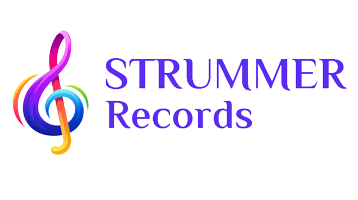Technology has changed photography in many ways, and one of the most visible changes is the debate between digital and film. Since digital cameras have become more accessible, photographers have been asking themselves which format is better. While there is no definitive answer to this question, understanding the differences between digital and film can help you make an informed decision about which works best for your needs.
This article will discuss the considerations you should keep in mind when choosing between digital and film as well as the advantages and disadvantages of each technology. We’ll also explore how to use both formats effectively to create stunning photography.
What is Digital Photography?
Digital photography is a type of photography that uses digital technology to take pictures. The term “digital photography” can mean different things to different people. For some, it may simply refer to the process of taking photos with a digital camera. For others, it may include more advanced processes like manipulating images with photo-editing software or using a computer to create artistic effects.
The main advantage of digital photography is that it offers greater flexibility than film photography. With digital photographs, you can easily make changes to the image file, such as cropping, adjusting the contrast or color balance, and even removing blemishes. You can also experiment with different effects without having to worry about wasting film.
In addition, digital cameras are generally smaller and lighter than their film counterparts, making them more convenient to carry around. And because there’s no need to develop a film, you can see your results right away.
What is Film Photography?
In the simplest terms, film photography is the process of capturing images on light-sensitive materials. Historically, this was done using photographic film, which was a strip of celluloid coated with light-sensitive chemicals. When exposed to light, these chemicals would react and produce an image.
With the advent of digital technology, film photography has largely been replaced by digital photography. However, many photographers still prefer to use film for a variety of reasons. Film cameras often produce very high-quality images, and many photographers find the process of shooting on film to be more satisfying than working with digital files.
If you’re interested in trying out film photography, there are a few things you’ll need to get started. First, you’ll need a camera that can shoot on film. Many modern cameras have this capability, but you’ll also need to purchase some film. Once you have your camera and film, you’re ready to start shooting!
The Advantages of Digital Photography
Digital photography has several advantages over film photography. Perhaps the most obvious is that you can see the results of your work immediately after taking the photograph. This means that you can take as many photographs as you like without having to worry about the cost of film and development.
Another advantage of digital photography is that it is much easier to edit and manipulate images using software such as Photoshop. This gives you a lot more control over how your final image looks. You can also easily share digital images with others by email or social media.
The Advantages of Film Photography
There are some advantages that you can expect from film photography. Here are some:
- Aesthetic: Film photography has a timeless, classic look that digital photography often lacks. From the subtle grain in black and white photos to the vibrant colors of slide films, film photography has its unique aesthetic that can be appreciated by both casual photographers and professionals alike.
- Cost-Efficient: Film is much more cost-efficient than digital photography as you don’t have to buy expensive bodies or lenses to get great results.
- Formality: Because of the amount of time and effort it takes to develop film, there is a certain level of formality associated with it; taking photographs with film requires more thought and consideration than simply pressing a button on a digital camera.
- Long-Lasting Results: Unlike digital images which can easily become corrupted or lost, film negatives are highly durable and can last for decades if stored properly. This makes them ideal for archiving memories or creating prints that will last a lifetime!
Which One Should You Choose?
The age-old debate of digital versus film has been around since the early days of photography. Both have their pros and cons, so it depends on what you’re looking for in a photographic medium. Here’s a breakdown of the key differences between digital and film to help you decide which one is right for you:
Digital
- Instant Gratification: With digital photography, you can see your results immediately after taking a photo. There’s no need to wait for your film to be developed, so you can quickly see if you got the shot you wanted and make any necessary adjustments before taking another one.
- More Forgiving: Digital cameras are more forgiving than film cameras when it comes to exposure, white balance, and other settings. This means that even if you don’t have perfect conditions or know exactly what settings to use, you’ll still likely end up with a decent photo.
- Less Expensive: Digital cameras and equipment are generally less expensive than their film counterparts although there are always exceptions. This makes getting started in digital photography more affordable than film photography.
- Greater Flexibility: Digital cameras offer a lot of flexibility when it comes to things like image format, resolution, and editing options. You can easily change the way your images look after they’ve been taken, giving you more control over the final product.
- Easier to Share: With digital photos, it’s easy to share them with others via email, text, or social media.
Film
- Classic Look: Many people prefer the classic aesthetic of film photos over digital photos. The film has a certain look that can’t be replicated with digital cameras, making it ideal for those who want to capture images timelessly.
- Higher Quality: Film generally produces higher-quality images than digital cameras because it captures more detail and dynamic range. This makes it great for taking portraits and landscapes where you want to capture as much detail as possible.
- Chemical Process: The chemical process of developing film is part of the charm of film photography and adds a unique element to the experience. It’s also an opportunity to get creative by experimenting with different developers and techniques to achieve your desired results.
- Tangible Prints: With digital photography, you never get an actual physical print. With film, you get real physical prints that you can touch, frame, and hang on your wall or keep in an album forever.
Ultimately, the choice between digital and film is up to personal preference and budget constraints. Both have their advantages and disadvantages, so it depends on what kind of photography experience you’re looking for.
Digital and film photography are both great ways to capture moments and create stunning, professional images. While each method has pros and cons, it’s important to understand the differences between digital and film before deciding which one is best for you.
So next time you’re behind the lens, consider your project needs before selecting either digital or film as your medium of choice!

